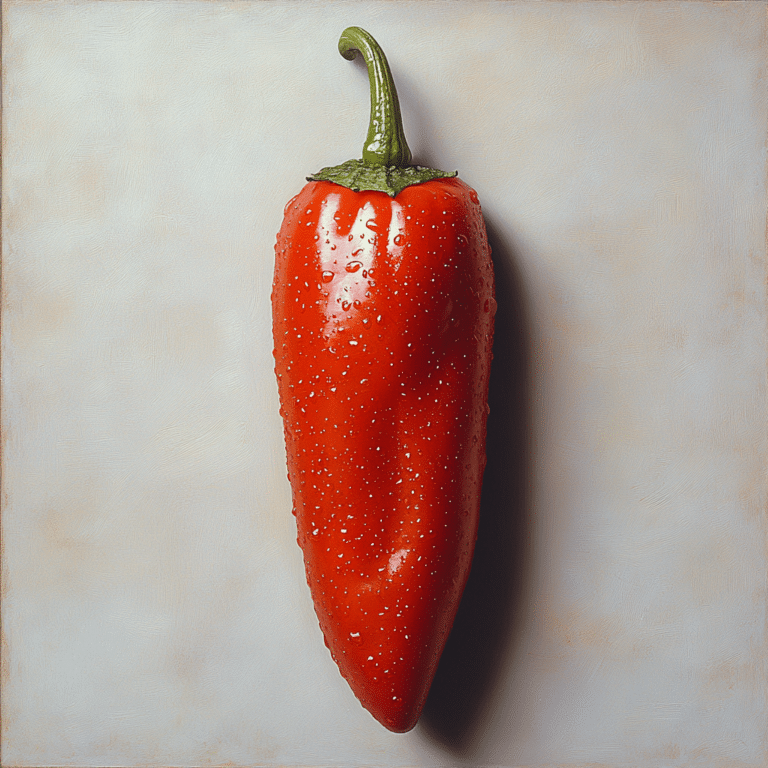When it comes to culinary exploration in South America, cuy in Ecuador stands out as a must-try delicacy that sparks both interest and appetite. Cuy, or guinea pig, isn’t just any dish; it’s a symbol of rich cultural heritage. The roots of this dish can be traced back to the ancient civilizations of the Andes, marking cuy as more than just food. It’s a celebration of tradition, community, and centuries of culinary expertise that resonates deeply with Ecuadorians. More than just a meal, cuy offers a taste of history, and anyone visiting Ecuador is strongly encouraged to partake in this delightful experience that defines Ecuadorian cuisine.
1. The Cultural Significance of Cuy in Ecuador
Cuy has a significant place in Ecuadorian culture, deeply intertwined with family traditions and gastronomic rituals. Historically, ancient indigenous peoples, including the Incas, viewed cuy not just as a source of sustenance, but also as a revered symbol of community and celebration. Today, gathering to share a meal of cuy is often tied to major life events like weddings and festivals, reinforcing the bond between food and culture.
The preparation of cuy involves time-honored techniques passed down through generations. Local cooks pay homage to their heritage, often invoking ancient customs during the cooking process. This isn’t merely an act of cooking; it’s about preserving a rich cultural identity that has been forged over millennia. For anyone who cares about tradition, engaging in this culinary artform serves as a beautiful reminder of what it means to truly appreciate cultural flavors and the stories they tell.
Additionally, the flavor of cuy is a topic that captivates both locals and visitors. With a taste profile that’s a blend of rabbit’s gaminess and the richness of duck, cuy in Ecuador offers a unique sensory experience. Each bite invites you to delve deeper into the essence of Ecuadorian culinary arts, encouraging appreciation and understanding of these ancient practices.

2. Top 5 Dishes Featuring Cuy in Ecuador
When in Ecuador, saying no to cuy is simply not an option. The country celebrates its culinary heritage with an assortment of ways to savor this unique dish. Here are five standout preparations that you must experience to get the full essence of cuy in Ecuador.
2.1. Cuy Asado (Roast Guinea Pig)
Cuy asado is the quintessential dish that every visitor should try while exploring Ecuador. This preparation involves marinating the guinea pig in local spices and garlic, creating an aromatic goodness that fills the air. Restaurants like La Casona in Cuenca excel at this dish, offering a crispy-skinned roast served alongside potatoes and fresh salad. One bite, and you’ll be hooked on the crunch, savoring the rich flavors that define Ecuador’s culinary scene.
2.2. Cuy Chactado (Fried Guinea Pig)
Looking for a crispy delight? Cuy chactado is your answer. This variation involves flattening and frying the guinea pig to achieve a tantalizing golden finish. El Mercado in Quito is a local favorite where you can find expertly fried cuy chactado paired with llapingachos (potato cakes) and a fresh assortment of salsas. The symphony of flavors and textures will make you rethink any preconceptions about this beloved delicacy.
2.3. Cuy al Horno (Oven-Baked Guinea Pig)
For those wanting an elevated culinary experience, cuy al horno is the gourmet approach to savoring this traditional dish. Baked with herbs and spices, it brings out the richness of the meat beautifully. Picantería La Negra in Otavalo takes this dish up a notch, offering a sophisticated twist that showcases how versatile cuy truly is. Be prepared to experience a depth of flavor that’s hard to forget.
2.4. Cuy en Salsa de Maní (Guinea Pig in Peanut Sauce)
If you’re ready for a flavor explosion, consider trying cuy in salsa de maní. This unique take integrates a vibrant peanut sauce that complements the rich meat perfectly. Restaurante Potosí in Quito specializes in this dish, providing a mouthwatering experience that blends textures and flavors in a delightful way.
2.5. Cuy Pibil (Guinea Pig with Banana Leaves)
Drawing from indigenous cooking techniques, cuy pibil involves marinating the meat in spices, wrapping it in banana leaves, and slow-cooking it. This dish celebrates Ecuador’s Amazonian influences and can be found at Mama Cuy. It’s an intriguing dish for anyone passionate about exploring authentic indigenous culinary practices. The delightful taste that emerges from this preparation is bound to leave you mesmerized.
3. How to Prepare Cuy at Home: Recipes and Techniques
For adventurous souls wishing to recreate the magic of cuy in Ecuador at home, here are some essential steps to consider. Preparing cuy can be an exhilarating culinary challenge that connects you to Ecuadorian traditions.
3.1. Sourcing Quality Ingredients
Start with sourcing your cuy carefully. It’s important to purchase from reputable suppliers or local markets. This not only supports local economies but ensures you’re receiving the best quality meat for an authentic preparation. Ethical sourcing practices also encourage a sustainable approach to enjoying this traditional dish.
3.2. Marinating for Flavor
No good cuy is complete without the perfect marinade. Consider using traditional spices such as garlic, cumin, oregano, and achiote for flavor and vibrant color. Marinating the cuy for at least 12 hours amplifies the flavors, allowing the spices to penetrate the meat thoroughly.
3.3. Cooking Techniques
When it comes to cooking cuy, understanding the techniques is key. Depending on whether you’re roasting, frying, or baking, each method has its own specified temperature and time. It is crucial to monitor doneness to achieve that sacred crispy skin while ensuring the meat stays tender on the inside.
3.4. Presentation and Serving
Serving cuy should be both functional and visually enticing. Present your dish with traditional accompaniments like boiled potatoes, corn, and fresh salsa to elevate the meal further. When done right, it transforms not just into a dish but a feast for the senses.

4. The Health Benefits and Ethical Considerations of Eating Cuy
Eating cuy goes beyond culinary gratification; it also harbors a myriad of health benefits. Known for being leaner than most meats, cuy is packed with protein while remaining low in fat—ideal for those mindful of their dietary intake.
However, ethical considerations are important. Understanding how cuy is raised and processed informs more conscientious eating choices. It’s vital to engage with practices that respect animals and local customs while enjoying this cultural delicacy.
5. Where to Experience Cuy in Ecuador
Ecuador is abundant with venues to delight in cuy, ranging from upscale restaurants to quaint traditional eateries. For stepping into this delightful culinary universe, here are notable establishments you should consider visiting:
Often, the best recommendations for enjoying cuy come from locals or insightful travel blogs that delve deep into Ecuadorian cuisine.
Cuy in Ecuador signifies a feast that’s about more than just nourishment; it reflects a vivid tapestry of culture, community, and culinary brilliance. Whether exploring vibrant markets or refined dining spots, each encounter with cuy invites you to embrace a piece of Ecuador’s heritage that resonates deeply within every delicious bite. Tasting cuy is simply an invitation to join in a longstanding tradition that binds generations through shared meals and cherished experiences. So if you find yourself in Ecuador, seize the opportunity to partake in this culinary adventure—you won’t regret it!
In a world that’s rapidly changing, let the appreciation for traditional dishes like cuy serve as a reminder that our food tells a story, one rooted firmly in culture and history. Embrace this fascinating journey, and let every bite of cuy transport you to the heart of Ecuadorian life.
Cuy in Ecuador: A Savory Delicacy You Must Try
Cuy, or guinea pig, is more than just a culinary choice in Ecuador—it’s a cherished tradition. While some might find it surprising, cuy has been a staple in Andean culture for thousands of years. This savory delicacy is often prepared for special occasions like celebrations and family gatherings. In fact, trying cuy in Ecuador feels akin to experiencing a rite of passage, where taste buds explore flavors that many might associate with a heartier fare. Speaking of culinary adventures, anyone who loves a good plot twist should check out Quigley Down Under for a taste of unexpected journeys.
Fun Facts About Cuy
Did you know that cuy is rich in protein and low in fat? This makes it not just a delicious choice but a healthy one too! Many Ecuadorians also believe that cuy has numerous health benefits, including increased energy and vitality. It’s a food that speaks volumes about the culture, bringing people together over a shared meal that often includes potatoes and corn—two other staples of Ecuadorian cuisine. It’s like that unforgettable feeling you get when catching up with old friends, where even the food becomes part of the story, much like Underwriting and its importance in securing loans and mortgages. Just like in food, understanding finances relies on knowing its core elements.
Another intriguing tidbit is cuy’s unique cooking style. While roasted cuy is a popular method, many locals might prepare it as a stew, showcasing the versatility of this little critter. If you’re gonna have cuy, it’s often served whole, making for a striking presentation on the table. This tradition mirrors the passion of people like Chelsea Mitchell, who showcases rich culinary experiences through her craft, highlighting how food connects to identity and history.
Cuy in Cultural Context
Eating cuy doesn’t just satisfy hunger; it’s woven into Ecuadorian culture. Different regions have their own methods and spices that give cuy its distinctive flavor. Fascinatingly, the celebration of cuy is similar to certain high-energy events, like a big concert with artists such as Drake in Miami, where excitement and shared experiences create a bond among attendees.
So, if your travels ever take you to the Andes, searching for cuy might just lead you to a culinary journey that opens up a world of tastes uniquely tied to local history and traditions. Just as the DJ Uiagalelei transfer brought a fresh twist to college football, trying cuy can be a mouthwatering reminder of how cultural dishes give life to our stories. Experience the vibrant culture of Ecuador; the flavors of cuy are sure to stick with you long after you’ve left.

What does a cuy taste like?
Cuy has a unique flavor that blends the gaminess of rabbit with the rich, oily taste of duck or dark meat chicken. It’s richer than most poultry, so many find it quite flavorful and satisfying, depending on how it’s prepared.
How do you pronounce cuy in Ecuador?
In Ecuador, cuy is pronounced like “kwee,” which makes it pretty easy to remember when ordering or discussing the dish.
Are guinea pigs native to Ecuador?
Guinea pigs, or cuy, are originally from South America, particularly the Andes. They’ve been domesticated for food by the original inhabitants of Ecuador, Peru, and Bolivia for thousands of years.
Can you eat cuy in the US?
Yes, it’s legal to eat cuy in the U.S. The FDA classifies it as a “non-amenable species,” like bison or venison, but there are currently no licensed farms for cuy in the country, so all of it is imported.
Is cuy meat healthy?
Cuy meat is quite healthy as it is low in fat and high in protein, making it a nutritious option. Many also consider it a delicacy due to its unique taste and historical significance.
Why do Ecuadorians eat cuy?
Ecuadorians eat cuy as it’s a traditional dish tied to their culture and history. It’s often reserved for special occasions, celebrations, and festive gatherings, offering a taste of ancestral customs.
What is the national dish of Ecuador?
The national dish of Ecuador is often considered to be cuy, served during festivals and family gatherings, usually accompanied by potatoes and a spicy peanut sauce.
Do you eat the skin of cuy?
Yes, you do eat the skin of cuy. It’s usually cooked until crispy, adding flavor and texture to the dish, making it quite appealing to many who try it.
Is cuy Peruvian or Ecuadorian?
Cuy is both Peruvian and Ecuadorian, as it is a traditional food in both countries with deep cultural roots in the Andean region.
Do guinea pigs carry diseases harmful to humans?
Like other domesticated animals, guinea pigs can carry diseases, but the risk of transmission to humans is low when they’re properly cared for and cooked.
What country eats the most guinea pigs?
Peru is known for consuming the most guinea pigs, a practice that dates back to the Incan civilization and is still prevalent today in many Andean cultures.
What is the lifespan of a female guinea pig?
The lifespan of a female guinea pig typically ranges from 4 to 6 years, given proper care and a healthy environment.
How much does cuy cost in Ecuador?
In Ecuador, cuy costs around US$13-17 when deep-fried, usually served with potatoes or salad, making it a popular delicacy for special occasions.
Is cuy illegal in NYC?
Cuy is not illegal in NYC, but it may be harder to find in restaurants since it’s not a common dish there, and you might have to seek out specialty markets.
How does cuy taste?
The taste of cuy falls somewhere between duck and rabbit, but like many meats, it can vary based on how it’s cooked and seasoned.
How tasty is a guinea pig?
Guinea pig, or cuy, is often described as very tasty by those who try it, as its unique flavor draws fans who enjoy rich and savory meats.
Do guinea pigs have a sense of taste?
Yes, guinea pigs have a sense of taste that helps them enjoy various foods. They have taste buds that allow them to detect different flavors, much like other animals.
What does American guinea hog taste like?
The American guinea hog is known for its rich and mellow flavor, often compared to that of a well-marbled pork, making it quite desirable for meat lovers.
What does guinea meat taste like?
Guinea meat is often described as tasting similar to rabbit or dark meat chicken, but like any meat, the flavor can vary based on preparation and cooking methods.





































